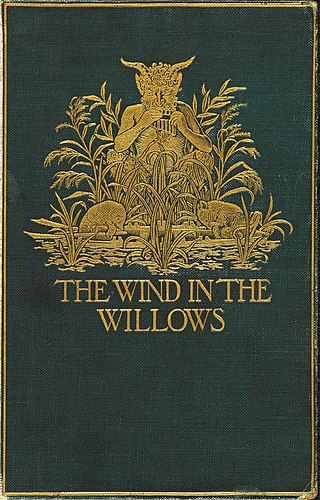
The Wind in the Willows is a children's novel by the British novelist Kenneth Grahame, first published in 1908. It details the story of Mole, Ratty, and Badger as they try to help Mr. Toad, after he becomes obsessed with motorcars and gets into trouble. It also details short stories about them that are disconnected from the main narrative. The novel was based on bedtime stories Grahame told his son Alastair. It has been adapted numerous times for both stage and screen.

Peter Rabbit is a fictional animal character in various children's stories by English author Beatrix Potter. A mischievous, adventurous young rabbit who wears a blue jacket, he first appeared in The Tale of Peter Rabbit in 1902, and subsequently in five more books between 1904 and 1912. The six books by Potter featuring Peter Rabbit have sold over 150 million copies. Spin-off merchandise includes dishes, wallpaper, painting books, board games and dolls. In 1903, Peter Rabbit was the first fictional character to be made into a patented stuffed toy, making him the oldest licensed character.
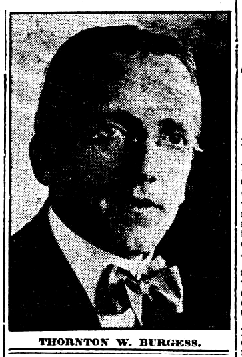
Thornton Waldo Burgess was an American conservationist and author of children's stories. He was sometimes known as the Bedtime Story-Man, after his newspaper column Bedtime Stories. By the time he retired, he had written more than 170 books and 15,000 stories for the daily newspaper column.
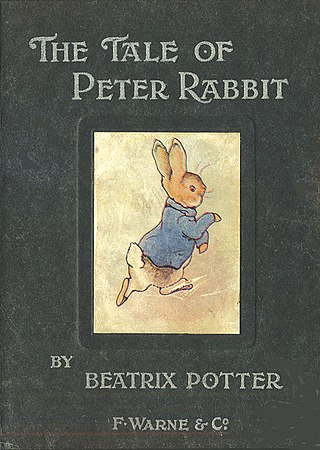
The Tale of Peter Rabbit is a children's book written and illustrated by Beatrix Potter that follows mischievous and disobedient young Peter Rabbit as he gets into, and is chased around, the garden of Mr. McGregor. He escapes and returns home to his mother, who puts him to bed after offering him chamomile tea. The tale was written for five-year-old Noel Moore, the son of Potter's former governess, Annie Carter Moore, in 1893. It was revised and privately printed by Potter in 1901 after several publishers' rejections, but was printed in a trade edition by Frederick Warne & Co. in 1902. The book was a success, and multiple reprints were issued in the years immediately following its debut. It has been translated into 36 languages, and with 45 million copies sold it is one of the best-selling books in history.
Paul Coker Jr. was an American illustrator. He worked in many media, including Mad, character design for Rankin-Bass TV specials, greeting cards, and advertising.
Grosset & Dunlap is a New York City-based publishing house founded in 1898.
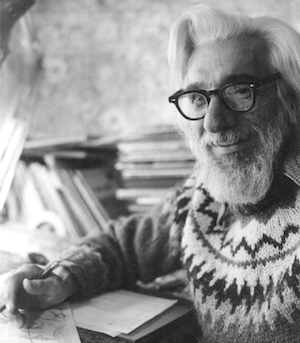
Vincenzo Francisco Gennaro Di Fago, known professionally as Vince Fago, was an American comic-book artist and writer who served as interim editor of Timely Comics, the Golden Age predecessor of Marvel Comics, during editor Stan Lee's World War II service.
Thunderbunny is a comic book about a boy who transforms into a superhero resembling a large pink humanoid rabbit. It was created by Martin Greim.

The Tale of Mr. Tod is a book written and illustrated by Beatrix Potter and was first published by Frederick Warne & Co. in 1912. It features Peter Rabbit and Benjamin Bunny along with several other characters from Potter's previous books. An animated film adaptation of the tale was featured on the BBC television anthology series The World of Peter Rabbit and Friends in 1995.

Here Comes Peter Cottontail is a 1971 Easter stop motion animated television special produced by Rankin/Bass Productions, currently distributed by Universal Television and based on the 1957 novel The Easter Bunny That Overslept by Priscilla and Otto Friedrich. The special is narrated by Danny Kaye and starring Casey Kasem, Vincent Price, Joan Gardner, and Paul Frees. The special also features Steve Nelson and Jack Rollins' Easter song "Here Comes Peter Cottontail".

Walter Harrison Cady (1877–1970) was an American illustrator and author, best known for his Peter Rabbit comic strip which he wrote and drew for 28 years.
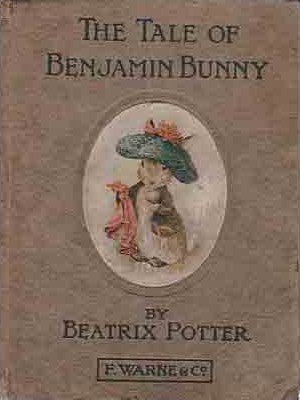
The Tale of Benjamin Bunny is a children's book written and illustrated by Beatrix Potter, and first published by Frederick Warne & Co. in September 1904. The book is a sequel to The Tale of Peter Rabbit (1902), and tells of Peter's return to Mr. McGregor's garden with his cousin Benjamin to retrieve the clothes he lost there during his previous adventure. In Benjamin Bunny, Potter deepened the rabbit universe she created in Peter Rabbit, and, in doing so, suggested the rabbit world was parallel to the human world but complete and sufficient unto itself.
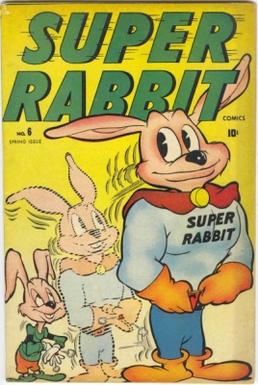
Super Rabbit is a fictional, talking animal superhero in comic books published by Timely Comics, a predecessor of Marvel Comics, during the 1930s and 1940s period fans and historians call the Golden Age of comic books. Created by cartoonist Ernie Hart, he first appeared in Comedy Comics #14.
Maury Laws was an American television and film composer from Burlington, North Carolina.

The Easter Bunny is Comin' to Town is a 1977 musical Easter television special produced by Rankin/Bass Productions, using their "Animagic" stop motion animation. It reunites the writer Romeo Muller, designer Paul Coker Jr., and narrator Fred Astaire from Santa Claus Is Comin' to Town, and stars the voices of Skip Hinnant, Bob McFadden, Meg Sargent, James Spies, and Allen Swift. The special originally premiered on ABC in the United States on April 6, 1977.
"Here Comes Peter Cottontail" is a popular secular Easter song composed in 1949, by Steve Nelson and Jack Rollins. They also wrote "Frosty the Snowman" in 1950. Mervin Shiner was the first person to record the song, on Decca Records in 1950. It reached #8 on Billboard Hot 100. The name 'Peter Cottontail' was used by a character in a 1914 Thornton Burgess book, but may not have been previously used to refer to the Easter Bunny.

Peter Rabbit is a computer-animated comedy television series for preschool children that debuted on the Nick Jr. Channel on December 14, 2012, in the United States and on CBeebies and BBC One on December 25, 2012, in the United Kingdom. It is based on the character of the same name from Beatrix Potter's children’s books. The series debuted on American TV and iTunes on December 14, 2012, with the pilot episode debuting as a Christmas holiday special, titled Peter Rabbit's Christmas Tale, and the show was becoming a regular series on February 19, 2013, in the USA. which was watched by three million viewers in the U.S. The first official DVD of Peter Rabbit was released on May 28, 2013, as a Walmart exclusive. It contains the programmes first eight episodes on a single disc. On October 11, 2013, Nickelodeon ordered a second series of 26 episodes. The series is also on the BBC Alba channel known as Peadar Kinnen. In Wales the series is known as Guto Gwningen dubbed into Welsh on S4C.

The Country Bunny and the Little Gold Shoes is a 1939 children's picture book written by DuBose Heyward and illustrated by Marjorie Flack.

David Magie Cory was a writer of more than fifty books for young children. He was best known for his Jack Rabbit stories, which were syndicated in newspapers for forty years.













